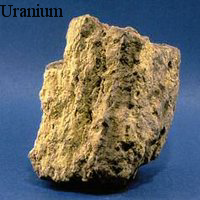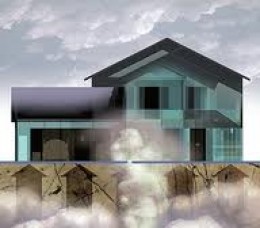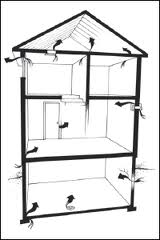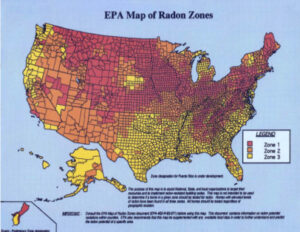Radon Testing & Radon Mitigation FAQs
Read What Others Are Asking About Radon
If you currently reside in Fargo, ND; Grand Forks, ND; Moorhead, MN; or Dilworth, MN, elevated radon levels throughout the states may have you wondering whether you should be taking action and if so, what action you should be taking. Over the years we have had a lot of questions asked in a numerous amount of ways. In turn, we have compiled a list of the most asked radon related questions regarding testing and mitigation services. Learn about the gas and the dangers that come with it below.
Radon is a colorless, odorless, and tasteless radioactive gas. It is a naturally occurring byproduct of the decay of uranium, which is found in varying amounts in soil and rock. As uranium breaks down, it produces radon gas, which can migrate through the ground and enter the air. Radon is a noble gas and chemically inert, meaning it does not readily react with other substances.
The concern with radon arises because, when inhaled, it can break down further, releasing tiny radioactive particles. These particles can damage lung tissue and increase the risk of lung cancer. Radon is considered a significant health hazard, and elevated levels of radon in indoor air pose a potential risk to human health. Testing for radon levels in homes and other buildings is recommended, and if high levels are detected, mitigation measures can be taken to reduce exposure.


Radon is dangerous because it is a colorless, odorless, and tasteless radioactive gas. When inhaled, it undergoes radioactive decay, emitting alpha particles that can damage lung tissue and increase the risk of lung cancer. Key reasons for its danger include:
Radioactive Decay:
Radon and its decay products emit alpha particles.
Lung Cancer Risk:
Prolonged exposure increases the risk of lung cancer.
Inhalation Exposure:
Inhaled radon particles can cause cellular damage.
No Sensory Warning:
Radon is imperceptible to human senses.
Prevalence:
Widespread and variable levels make testing essential.
Cumulative Exposure:
Long-term exposure heightens the risk.
Testing homes for radon and implementing mitigation measures are crucial to reduce health risks associated with elevated radon levels.
Radon, a colorless and odorless radioactive gas, enters homes primarily through:
Soil and Rock:
Released as a byproduct of uranium decay in soil.
Enters through foundation cracks and openings.
Foundation Openings:
Seeps through cracks in basement floors, walls, and gaps around pipes.
Crawl Spaces:
Enters living spaces through crawl space soil and foundation gaps.
Well Water (Less Common):
Can enter homes through well water, released during usage.
Building Materials (Rare):
Some materials with uranium, like granite, may emit radon.
Natural Ventilation:
Tight home sealing for energy efficiency may increase indoor radon levels.
Testing is crucial, and if elevated levels are found, mitigation measures can be taken to reduce the risk of radon exposure.
Exposure to high levels of radon poses significant health risks, primarily due to the radioactive decay products of radon. The primary health risk associated with radon exposure is an increased risk of lung cancer. Here are key health risks associated with high radon levels:
Lung Cancer:
Radon is the second leading cause of lung cancer, after smoking.
Inhaling radon gas leads to the deposition of radioactive decay products in the lungs, increasing the risk of lung cancer over time.
Non-smokers can also be at risk, but the risk is higher for smokers who are also exposed to elevated radon levels.
No Immediate Symptoms:
Unlike some other pollutants, radon is odorless, tasteless, and colorless, so individuals may not experience immediate symptoms.
The health effects, particularly lung cancer, manifest after a prolonged period of exposure.
Cumulative Risk:
The risk of lung cancer from radon exposure is cumulative over a person's lifetime.
Long-term exposure to elevated radon levels increases the likelihood of developing lung cancer.
Variable Risk:
Individual susceptibility to radon-related health risks can vary.
Factors such as smoking, the duration of exposure, and other environmental factors can influence the overall risk.
Prevalence:
Radon is present in varying concentrations in homes worldwide, and high levels have been found in certain geographic regions.
It is estimated that radon exposure contributes to a significant number of lung cancer deaths each year.
To mitigate the health risks associated with radon, it is crucial to test homes for radon levels. If elevated levels are found, various radon mitigation measures can be implemented to reduce exposure. Radon mitigation strategies may include the installation of ventilation systems, sealing foundation cracks, and other measures aimed at preventing radon entry into indoor spaces.
The symptoms of radon gas exposure won’t appear immediately but will show up in the form of larger health problems, like lung cancer, down the line. There is no documentation of short-term symptoms for exposure to Radon. If you are exposed to high radon levels, it will take years before noticing any kind of symptoms.
Early signs of long-term exposure to this gas include coughing, wheezing, and shortness of breath. More severe symptoms you could experience following exposure are chest pain, extreme weight loss, and coughing up blood. You will not under any circumstances get symptoms such as headaches, joint pain, rashes, or stomach or sinus problems from exposure to Radon.
A picocurie (pCi) is a unit of measurement commonly used to quantify radioactivity. It is equivalent to one trillionth of a curie, which is the standard unit of radioactivity. The curie is named after Marie and Pierre Curie, pioneers in the study of radioactivity.
In the context of radon measurement, radon levels in indoor air are often expressed in picocuries per liter (pCi/L). These units help quantify the concentration of radon gas in each volume of air. For example, the U.S. Environmental Protection Agency (EPA) recommends action be taken to reduce radon levels in homes if they exceed 4 pCi/L.
The acceptable radon level in homes and businesses is a matter of health and safety standards set by various organizations. In the United States, the Environmental Protection Agency (EPA) provides guidance on radon levels. Along there no safe levels of radon gas the EPA recommends taking action to mitigate radon if indoor radon levels exceed 4 picocuries per liter (pCi/L). This is often referred to as the "action level" or "recommended action level."
Here's a breakdown of radon levels as defined by the EPA:
- 4 pCi/L or higher: Action is recommended. Consider implementing radon mitigation measures to reduce indoor radon concentrations.
- 2 pCi/L to 4 pCi/L: While below the action level, the EPA suggests considering mitigation, especially if levels can be reduced to below 2 pCi/L.
- Below 2 pCi/L: While considered a lower risk, further reduction is encouraged if feasible.
It's important to note that no level of radon exposure is entirely risk-free. The goal is to minimize exposure as much as possible. Other countries may have different guidelines, so it's advisable to check with local health or environmental agencies for specific recommendations in your region.
Regular radon testing is recommended, especially in areas known to have higher radon potential. If elevated levels are detected, various radon mitigation measures can be implemented to reduce the risk of exposure in homes and businesses.
Yes, it is generally recommended that every home be tested for radon. Radon is a naturally occurring radioactive gas that can enter homes through the ground, and its levels can vary widely from one location to another. Testing is the only way to determine the radon levels in a particular home.
Since Radon levels fluctuate, not only from hour to hour, but also from year to year, the EPA recommends testing your house for Radon every 2-5 years.
Several factors contribute to the importance of radon testing in homes:
Prevalence of Radon:
Radon is found in many areas around the world, and elevated levels have been detected in homes in various geographic locations.
Health Risks:
Prolonged exposure to elevated radon levels increases the risk of lung cancer, making it important to identify and mitigate potential sources of exposure.
Variable Radon Levels:
Radon concentrations can vary widely from one home to another, even in the same neighborhood. Testing is necessary to assess the radon risk for a specific residence.
Simple and Inexpensive Testing:
Radon testing is typically straightforward and can be done using test kits available for purchase. Professional radon testing services are also available.
Mitigation Opportunities:
If elevated radon levels are detected, various radon mitigation measures can be implemented to reduce indoor concentrations and minimize health risks.
Real Estate Transactions:
Many real estate transactions may include radon testing as part of the inspection process, reflecting the growing awareness of the importance of radon assessment in home safety.
Given the potential health risks associated with radon exposure and the relatively simple and cost-effective nature of radon testing, it is advisable for homeowners to test their homes, especially in areas where radon is known to be prevalent. Testing is a proactive measure that helps ensure a healthy indoor environment and allows for the implementation of mitigation measures if needed.
Having a Radon test professionally done will cost between $189-$300.
It's essential to choose a certified radon measurement professional or service provider to ensure accurate and reliable results. The cost may also include the analysis of the collected samples and a detailed report of the radon levels in the tested area.
If you prefer a more budget-friendly option, you can also use do-it-yourself radon test kits, which are available for purchase at hardware stores, home improvement centers, or online. These kits generally cost less than professional testing services, ranging from $15 to $50, but they may have additional fees for laboratory analysis.
Yes, even if you don't have symptoms, it is advisable to get a radon test for your home. Radon is a colorless, odorless, and tasteless gas, and individuals exposed to elevated levels may not experience immediate symptoms. However, long-term exposure to high levels of radon increases the risk of developing lung cancer.
Testing is the only way to determine the radon levels in your home. Radon levels can vary widely from one geographic area to another and even between homes in the same area. The U.S. Environmental Protection Agency (EPA) and other health organizations recommend testing homes for radon, especially in regions known for higher radon potential.
Testing for radon is relatively straightforward, and there are do-it-yourself test kits available or you can hire a professional radon measurement service like Nordic Inspections. If elevated radon levels are detected, mitigation measures can be taken to reduce the risk of exposure and ensure a healthier indoor environment. Even if you don't have symptoms, testing is a proactive step to assess and address potential radon hazards in your home.
Yes, radon testing can be done in an unfinished basement. In fact, testing in the lowest livable area of the home, whether finished or unfinished, is often recommended because radon tends to accumulate in lower levels of buildings. Unfinished basements are commonly tested since they often provide a direct exposure pathway for radon to enter the home.
Testing in an unfinished basement is an effective way to assess radon levels, and it helps provide a more accurate representation of potential radon exposure in the home. If elevated radon levels are detected, further measures, such as radon mitigation through professionals at Nordic Inspections, can be implemented to reduce indoor radon concentrations.
As the Radon levels fluctuated not only hour by hour, but also from year to year, the EPA recommends testing your house every 2 years.
North Dakota and Western Minnesota is a Zone 1 area, which means an area with a higher possibility of elevated Radon levels. Around 50% of all houses in this area are likely to have dangerous levels of Radon.
Not necessarily. Radon levels can vary significantly from one home to another, even among neighboring houses. Factors such as the geology of the soil, construction materials, and ventilation can all influence radon concentrations. Each home is unique, and the only way to know the radon levels in your specific residence is to conduct a radon test.
If your neighbor has obtained a high radon reading, it does suggest the presence of radon in the area, and you may want to consider testing your own home. Radon levels can differ between properties due to variations in construction, foundation types, and other factors.
It's essential to conduct an individual radon test for your home.

The basement or lowest level of a vacant house is unlikely to exhibit significantly different radon levels compared to when the home is occupied. Radon does not accumulate to higher levels during vacancy due to natural ventilation and the 3.8-day half-life of radon gas.
The U.S. Environmental Protection Agency and the Surgeon General suggest contemplating the installation of a mitigation system when radon levels range from 2 to 4 pCi/l. Additionally, they strongly advise taking decisive action if a home's radon test results measure 4.0 pCi/l or higher.
The U.S. Environmental Protection Agency and the Surgeon General highly advise implementing additional measures if the radon test results in a home register 4.0 pCi/l or higher.
To ensure the effectiveness of radon reduction efforts, it is essential to conduct a retest shortly after the installation of a mitigation system, within 24 hours to 30 days. Subsequent retests should be performed every two years to verify the continued efficacy of the system.
A radon mitigation system is a set of techniques and equipment designed to reduce indoor radon levels. It typically involves creating suction points, installing vent pipes with a radon-rated fan, sealing entry points, and, in some cases, encapsulating crawl spaces. The goal is to prevent radon gas from entering living spaces and expel it safely outdoors. Hiring a qualified professional to assess and install an appropriate system is crucial for its effectiveness. Regular testing and, if needed, mitigation are essential for minimizing health risks associated with radon exposure.
A radon mitigation system works by creating a pressure difference that prevents radon gas from entering indoor living spaces and directs it safely outdoors. The most common type of radon mitigation system is called Active Soil Depressurization (ASD). Here's an overview of how it works:
Suction Point Installation:
A hole is drilled into the soil beneath the foundation or a suction point is created in the basement or crawl space.
The suction point is connected to a pipe that extends through the building and leads to the outside.
Vent Pipe and Radon Fan:
The pipe, known as the vent pipe, runs from the suction point through the building to the roof or exterior.
A radon-rated fan is installed in the vent pipe to create suction and draw radon-laden soil gas away from the foundation.
Negative Pressure Zone:
The fan creates a negative pressure zone beneath the foundation, preventing radon from entering the home.
This negative pressure encourages radon to flow towards the suction point and be vented outside.
Sealing Entry Points:
Gaps and cracks in the foundation are sealed to minimize the entry of radon gas.
Venting Radon Outdoors:
The vent pipe extends above the roofline or is directed away from windows to ensure that expelled radon dissipates harmlessly into the outdoor air.
Continuous Monitoring (Optional):
Some systems include continuous radon monitoring devices to ensure ongoing effectiveness and provide alerts if radon levels rise.
By implementing this system, the goal is to reduce radon concentrations in indoor air to levels below the recommended safety thresholds. Professional installation and periodic testing are crucial to the success of a radon mitigation system.
Yes, there are several benefits to radon mitigation:
Health Protection:
The primary benefit of radon mitigation is the reduction of indoor radon levels, thereby decreasing the risk of lung cancer associated with radon exposure. Mitigation measures aim to create a healthier indoor environment.
Increased Home Safety:
Mitigating radon ensures a safer living environment by preventing the accumulation of a potentially harmful radioactive gas. This is particularly important for long-term health and well-being.
Compliance with Health Guidelines:
Radon mitigation helps homeowners comply with health guidelines and recommendations provided by organizations such as the U.S. Environmental Protection Agency (EPA) and the World Health Organization (WHO).
Enhanced Property Value:
In real estate transactions, homes with effective radon mitigation systems may be more attractive to buyers, and the presence of a mitigation system can enhance the property's overall value.
Peace of Mind:
Knowing that radon levels have been reduced through mitigation measures provides homeowners with peace of mind, reducing concerns about potential health risks associated with radon exposure.
Prevention of Structural Damage:
Radon mitigation often involves sealing cracks and gaps in the foundation, which can contribute to preventing water infiltration and other structural issues in the home.
Improved Indoor Air Quality:
Radon mitigation contributes to improved indoor air quality by reducing the concentration of a radioactive gas that can pose health risks.
It's important to note that the specific benefits may vary depending on the severity of the radon issue, the effectiveness of the mitigation system, and other factors. Professional assessment, installation, and regular testing are essential components of successful radon mitigation efforts.
A radon mitigation system should be installed by an experienced professional in order to achieve the best results.
The cost of installing a radon mitigation system can vary based on several factors, including the size and design of the home, the severity of the radon issue, the type of mitigation system needed, and local labor and material costs. On average, the cost for radon mitigation system installation in the United States typically ranges from $800 to $4,500.
Here are some factors that can influence the cost:
Home Size and Design:
Larger homes or homes with complex designs may require more extensive mitigation systems, affecting the overall cost.
Type of Mitigation System:
The type of system needed (e.g., sub-slab depressurization, drain tile depressurization, crawl space encapsulation) can influence the cost. The choice depends on the specific conditions of the home.
Labor and Material Costs:
Local labor rates and the cost of materials in your area can impact the overall installation cost.
Foundation Type:
The type of foundation (e.g., basement, crawl space) and the construction materials used can affect the complexity of the installation and, consequently, the cost.
Additional Features:
Some homes may require additional features, such as multiple suction points or specialized sealing, which can add to the overall cost.
It's crucial to consult with a qualified radon mitigation professional to assess the specific conditions of your home and provide an accurate estimate. While the cost may seem significant, investing in a proper radon mitigation system is essential for reducing health risks associated with radon exposure. Additionally, the long-term benefits, including improved indoor air quality and increased property value, should be considered.
Although installing a radon mitigation system should significantly reduce the amount of radon in a building, no system is guaranteed to be 100% effective. For that reason, testing for elevated radon levels may still be advisable, especially in areas at greater risk.


